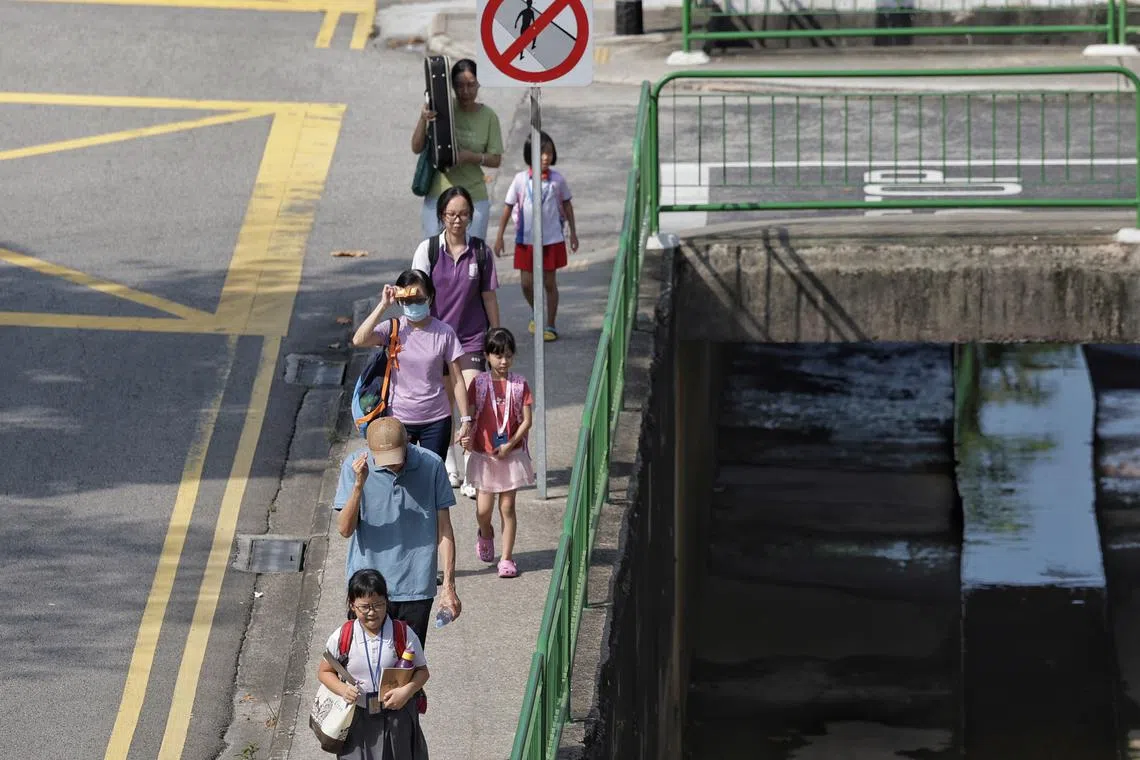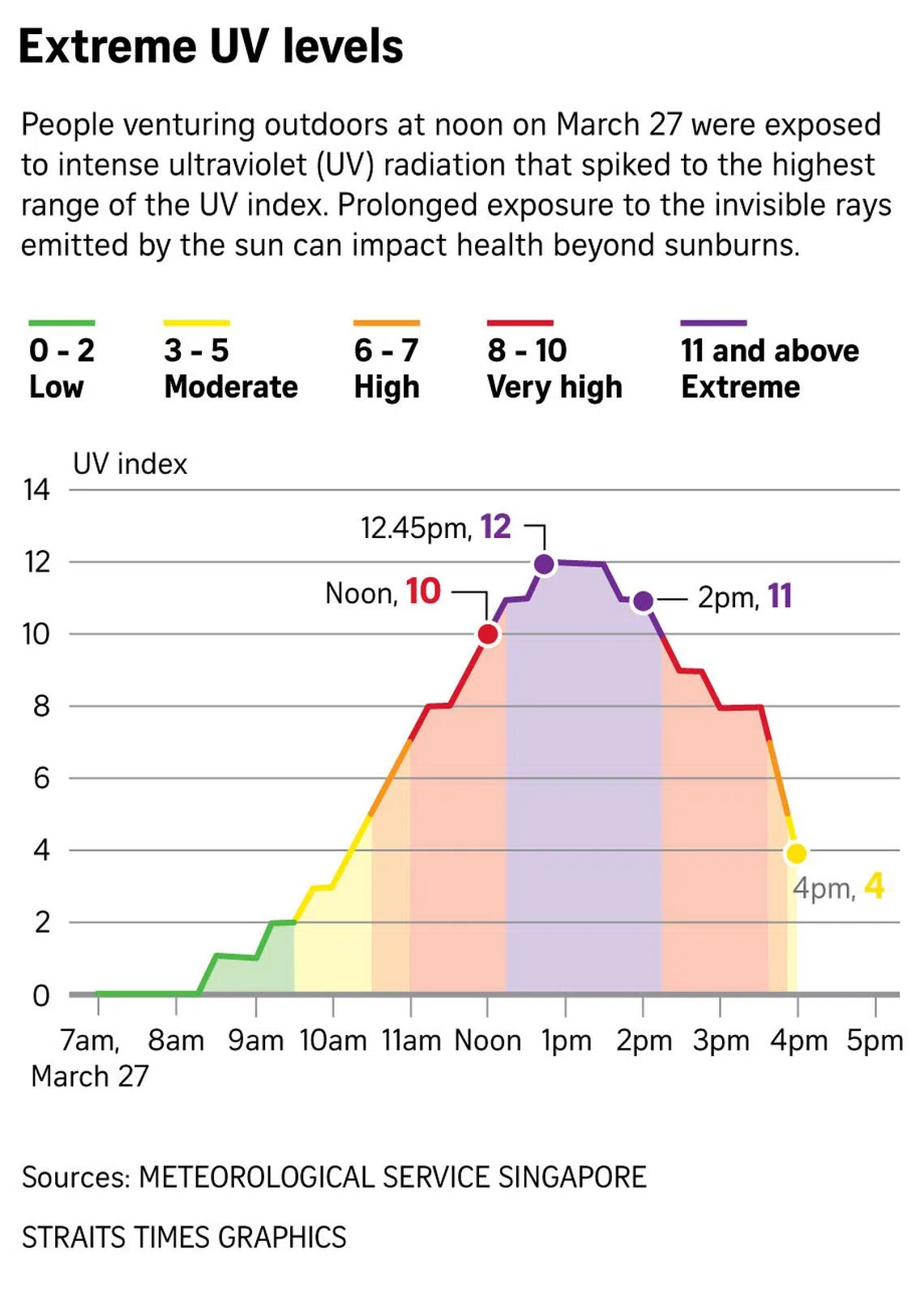UV index in S’pore hits extreme levels; NEA urges extra sunburn protection
Sign up now: Get ST's newsletters delivered to your inbox

Those who are out in the sun should take protective measures to guard from UV exposure by using umbrellas and wearing hats and sunglasses, NEA said.
ST PHOTO: KEVIN LIM
Follow topic:
SINGAPORE – Put on more sunscreen and keep umbrellas and hats handy, the National Environment Agency (NEA) has advised, as the ultraviolet (UV) index hit extreme levels on the afternoon of March 27.
The UV index in Singapore first entered the extreme band at about 12.15pm that day, with a reading of 11. It climbed to a high of 12 at about 12.45pm.
By 2.15pm, the UV index reading had dropped to 10, which is still considered very high, and people are still advised to take extra protection against sunburn. The UV index slid to the moderate and low levels after 4pm.
Temperatures were between 31.1 deg C and 35.7 deg C at around 2pm, with the highest recorded in Paya Lebar.
The UV index describes the level of solar UV radiation at the earth’s surface, and the maximum reading is 15.

The higher the reading, the greater the possibility of harmful effects on the skin and eyes, NEA’s website stated.
UV index readings of 11 and above are considered extreme, while those between eight and 10 are considered very high. When UV index readings are in either band, the NEA advises extra protection against sunburn.
Dr Dana Elliott Srither, founder of local telemedicine platform Rexmed.io, said that at a UV level of 12 on the index, people could get sunburnt within 12 minutes.
“UV radiation is harmful to us over prolonged periods. It increases the risk of cancer and eye diseases,” he said.
“In fair-skinned individuals, it starts to cause damage after about five to 10 minutes. It is recommended that sunscreen be applied if exposure is expected for 20 minutes or longer.”
Those who are out in the sun should take protective measures to guard against UV exposure by using umbrellas and wearing hats and sunglasses, NEA said in an advisory on its website. Those venturing outdoors should also slather on sunscreen of at least SPF 30 every two hours.
According to the agency, it is common for the UV index to reach very high and extreme levels between 11am and 3pm on a day with little cloud cover. The months of February, March, April and September tend to see the highest UV radiation.
The UV index is measured at the Changi Meteorological Station and reported every 15 minutes between 7am and 7pm.
UV radiation levels depend on the time of the day, season, latitude, cloud cover and ozone levels.
UV levels can be just as high on a cool day as on a hot one, especially if the skies are clear, according to Australia’s Cancer Council.
Even as UV radiation hit extreme levels on March 27, heat stress levels were between low and medium. Heat stress takes into account the effects of humidity, air temperature, wind speed and solar radiation.
However, guarding against UV rays and heat stress at the same time can present a dilemma.
“Our outdoor workers would want to don layers to minimise UV exposure for good reason. But those layers will trap heat,” noted Associate Professor Jason Lee, director of the Heat Resilience and Performance Centre at the National University of Singapore’s Yong Loo Lin School of Medicine.
In its annual climate assessment report released on March 23, the Meteorological Service Singapore said 2024 could be even hotter than 2023,
This year is predicted to be more sweltering due to the lingering effects of a climate phenomenon known as El Nino, which reached Singapore in the second half of 2023, and causes hotter and drier weather over South-east Asia.
Correction note: In an earlier version of the story, we said the UV index is reported hourly here. NEA has since clarified that it is reported every 15 minutes.


